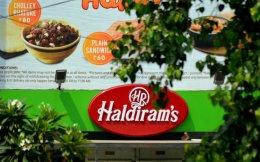Quick-service restaurants have fared better than their casual- or fine-dining counterparts thanks to the deep penetration capabilities of food aggregators such as Swiggy, said panellists at the VCCircle Consumer and E-Commerce Investment Summit 2019 on Thursday.
The day-long summit kicked off in Mumbai with participation from a bunch of private equity and venture capital investors in the consumer sector as also a number of entrepreneurs who shared their insights on how to build businesses and tackle challenges.
The panel comprised Riyaaz Amlani, MD at Impresario; Zorawar Kalra, MD at Massive Restaurants Pvt. Ltd; and Kabir Jeet Singh, CEO at Burger Singh. The panel was moderated by Archana Jahagirdar, CEO, Angelworks.
Kalra said QSR chains have done exceedingly well in the recent past after the emergence of online restaurant discovery and food-delivery platforms such as Swiggy and Zomato.
“The QSR segment has seen growth for the past two years. Earlier, casual- and fine-dining restaurants were growing at a fast pace,” he said.
He emphasized that delivery has played a pivotal role in the growth of QSR chains. “On average 47 lakh online orders are placed in a single day. Experiential players such as us or Impresario have to bear partial destruction.”
Amlani said that Indians, particularly millennials, look for experience and experiments, and so there is no brand loyalty. “Dining out is replacing the kitchen and thus helping the market to expand,” he said.
However, both agreed that they have started delivering their food and that heavy discounting is not good for business. Food delivery has enabled 10-20% uptick in the sales of these chains, they said.
Singh, who was the representative from the QSR segment in the panel, pointed out several factors that might have impacted the profitability of the casual- and fine-dining restaurants.
“Fixed costs such as salaries of employees, particularly chefs, are slightly higher in casual dining,” he said, adding that dining chains also have more stock-keeping units than QSR chains.
Another reason is that large-sized restaurants are more dependent on metros. Also, consumers have to spend on eating out. This makes such restaurants a weekend phenomenon.
“Nearly 80% of the sales for casual dining is from metros and the rest from Tier-1 cities. You can’t order from casual-dining outlets daily as food is too costly,” Singh said.
Taking a cue from food-tech players, the restaurateurs are also experimenting with technology. Technology, they agreed, have helped a lot to reduce cost, wastage and pilferage.
“Technology such as real-time inventory management has not only helped understand sales patterns but also helped cut down wastage of raw materials,” said Kalra.
Singh said that technology has helped QSR firms in two ways—online orders and understanding consumer behavior.
“A large part of our orders come from online. Also, it helps in tracking consumer behavior and targeted marketing efforts,” he said.







